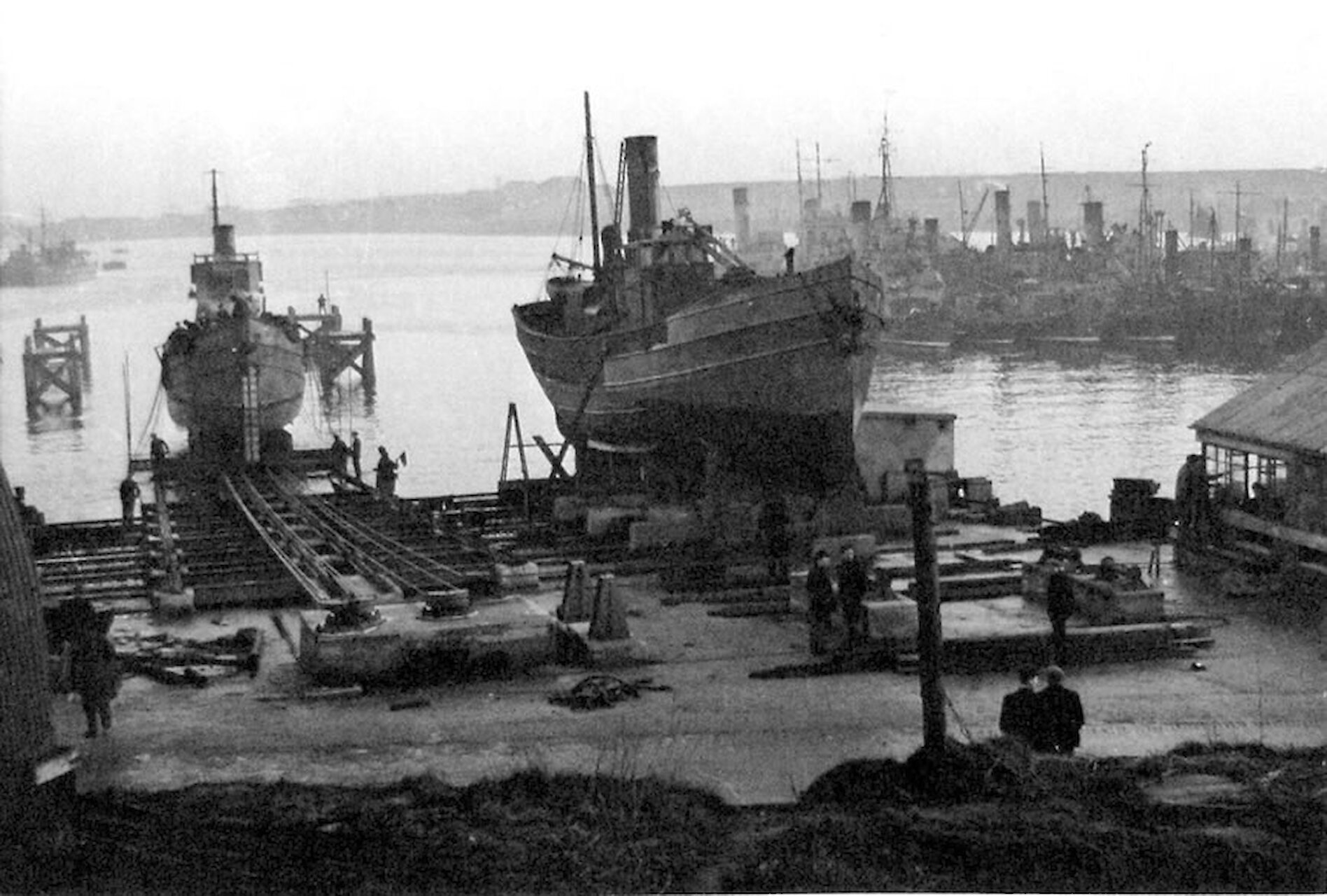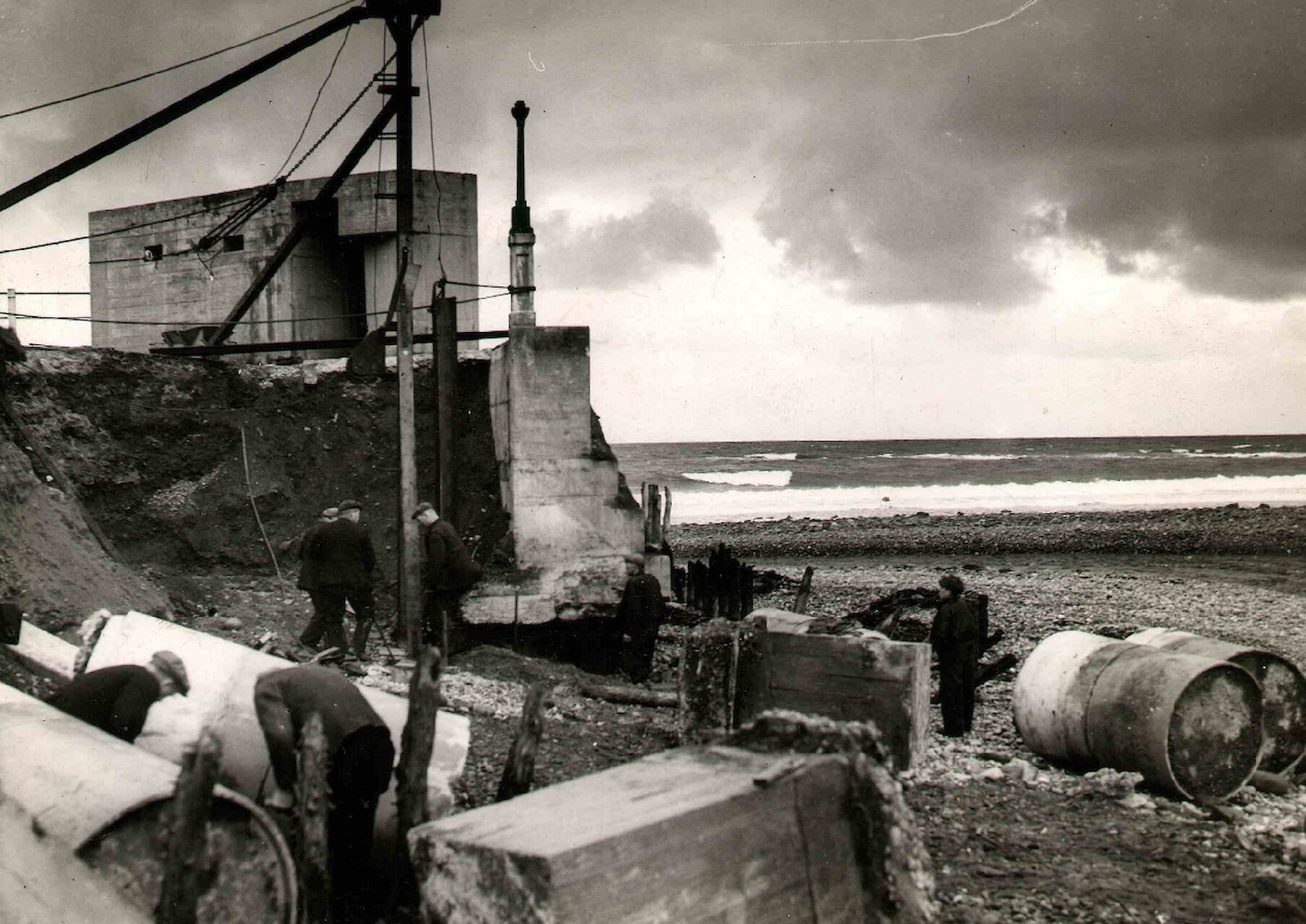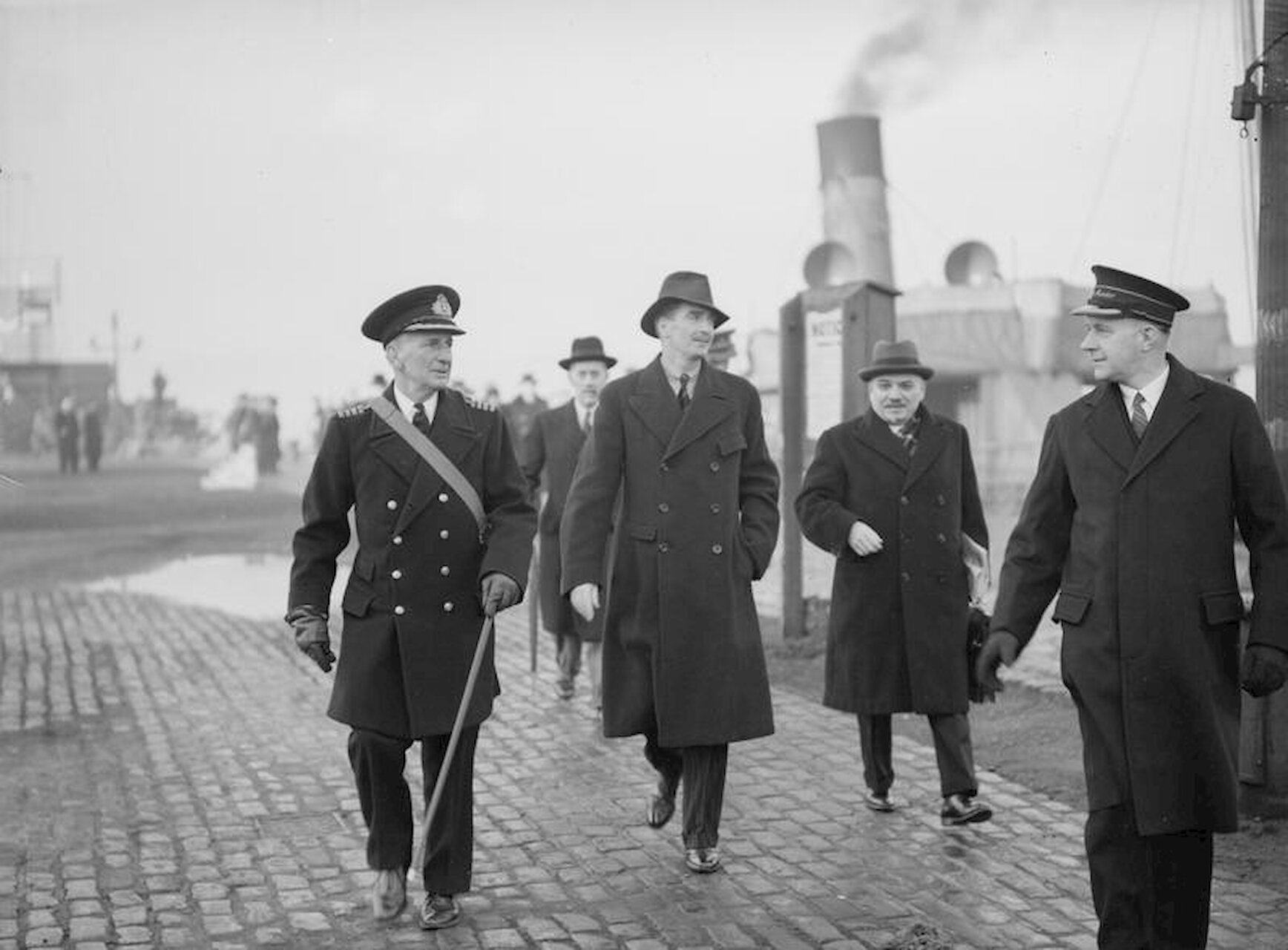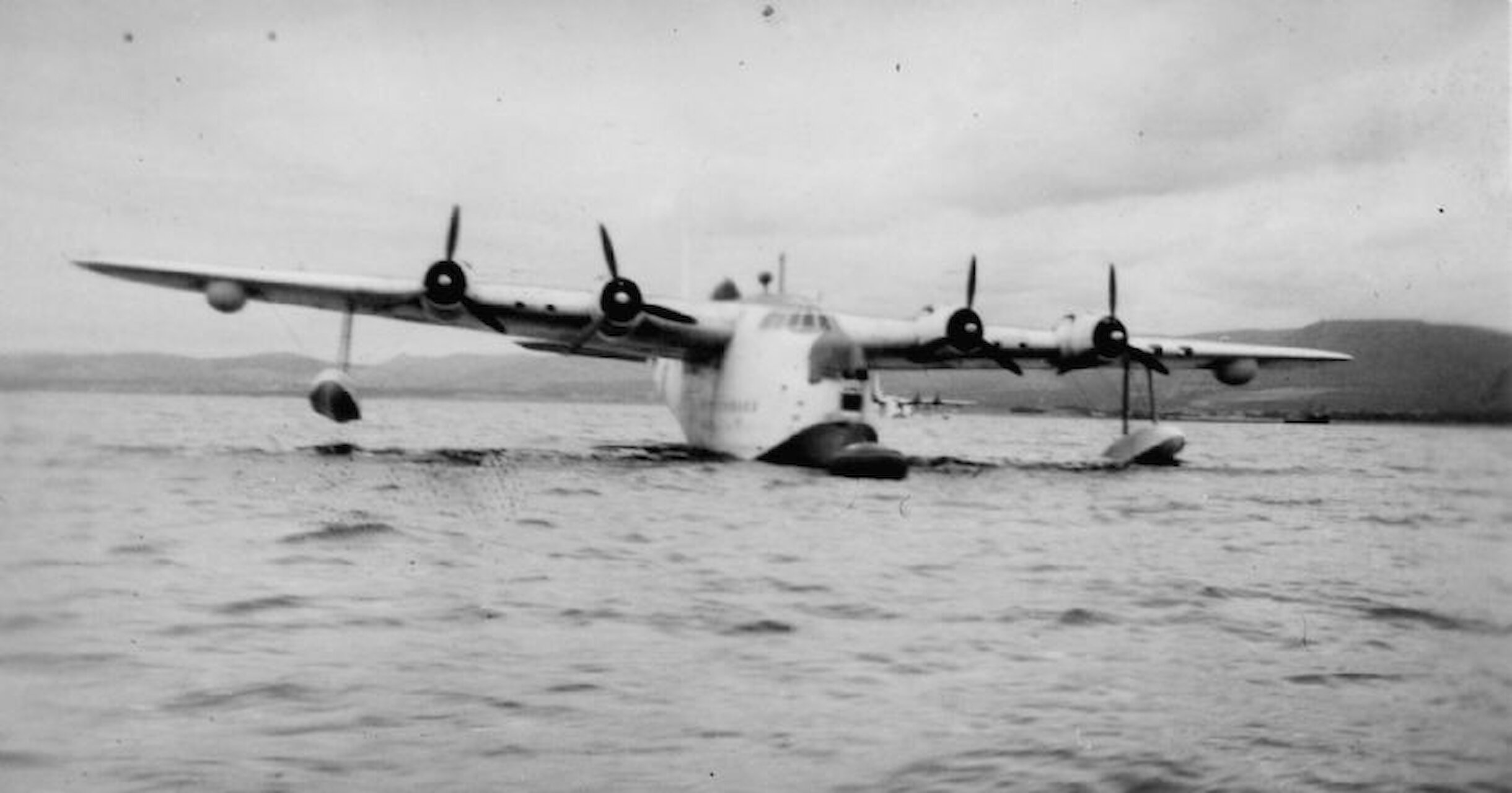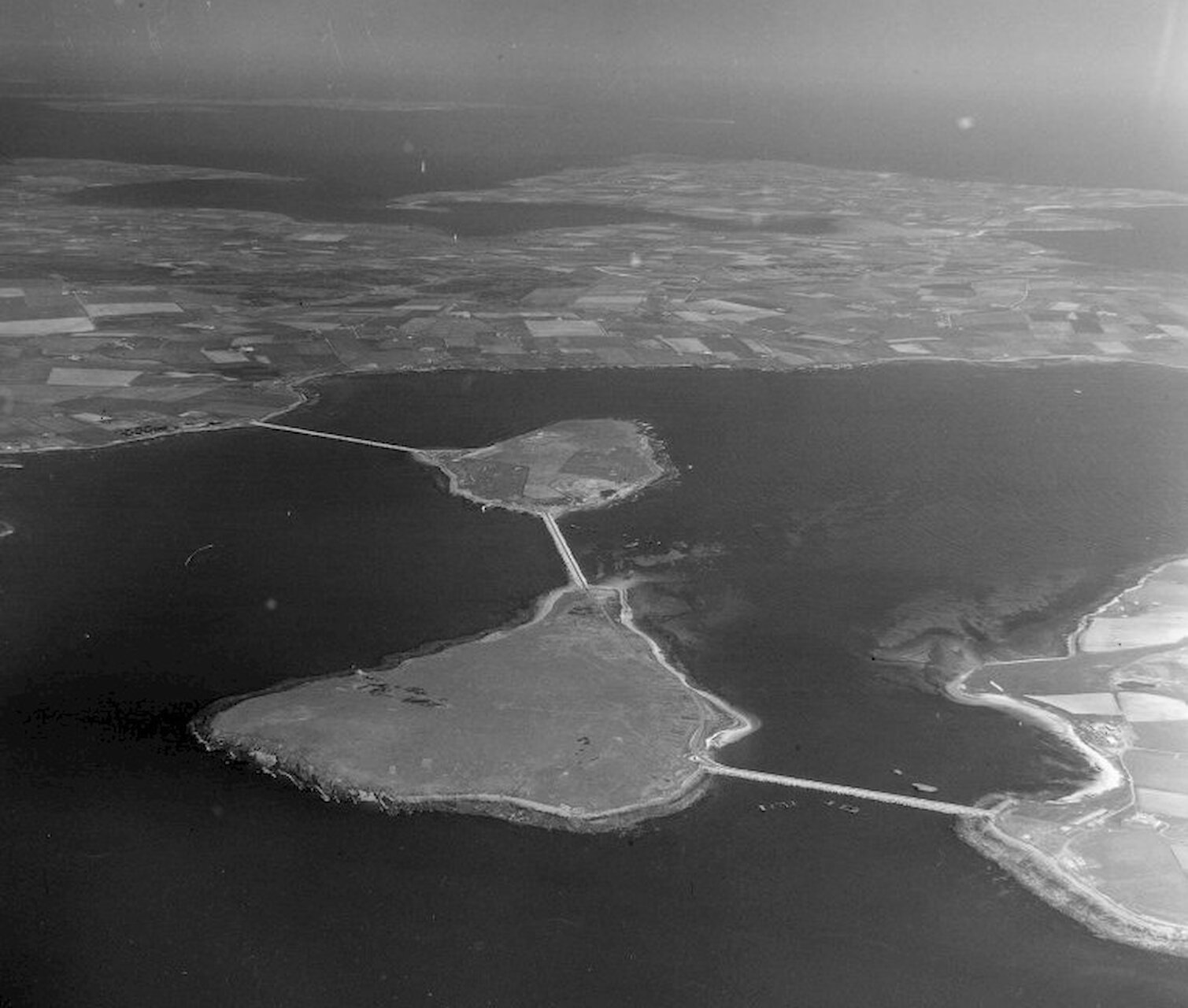With the nation at war, the firm's workload increased dramatically in the first half of the decade, as many Scottish harbours required upgrades for military use.
One project directly linked to the war was the design of a reinforced concrete slipway and cradle for the naval base at Lyness in Orkney. This was needed for the repair and maintenance of the many herring drifters commandeered by the Navy to serve the British Home Fleet based in Scapa Flow. The slipway was installed in 1943. After the war, the cradle, traverser carriages, winch and traverser gear for this slipway were purchased by Wick Harbour Trust and were installed in their port on another Arch Henderson slipway. A pier was also designed for the RAF’s flying boat base at Dalmore, near Alness.
Other war related work included designs for air raid shelters in Portsoy and Wick and the reconstruction of Princes Pier in Greenock. (Seen in image below with Anthony Eden). This work was the first job Ian Henderson took on when he joined his father’s office in 1943, having spent the earlier years of the war as a contractor; being the Agent on a number of defence projects such as the construction of coastal defences in the north east of Scotland, and of three RAF stations.
When the Greenock project was completed, Ian Henderson returned to Aberdeen to become his father’s Chief Assistant, working initially on the reconstruction and modernisation of Hall Russell’s shipyard in Aberdeen. He then moved on to the preparation of proposals for the development of fishing harbours. Looking ahead to the post-war period, many communities and harbour authorities sought plans to develop their harbours to accommodate the larger fishing vessels which were expected to replace the smaller ones, for which many ports had been built.
Proposals were prepared for harbours for Stornoway in the Western Isles and Yell in Shetland, for Girvan and Kyle of Lochalsh in the west, and for many east coast harbours from Lybster in the north mainland, right down to Pittenweem in Fife. Numerous ports on the Moray Firth were included. While most proposals were for straightforward conventional harbour developments, not all were. The project in Stornoway included quay improvements and the construction of a slipway, both of which were later carried out, but it also included an instruction to Archibald Henderson to advise them on the facilities needed to handle seaplanes and how to provide them in Stornoway. Post-war airlines however, preferred to land on the solid ground at Stornoway Airport, which the RAF had developed, so Lewis never attracted a scheduled seaplane service.
In the post-war competition for funding, many of the proposals which the firm had worked on were abandoned, including another attempt at a new harbour in Gardenstown. But many were successful in one form or another; although it would be well over a decade before some were completed. Successful projects included Stonehaven, Macduff, Pittenweem, Nairn and Symbister, Shetland. Other work included improvement and repairs to the banks of the River Cowie at its mouth at the north end of Stonehaven Bay.
Sadly, in 1947, Archibald Henderson died, at the age of 69. He had still been managing the company at the time of his death. His son, Ian, took over as Senior Partner, and Malcolm Morrison was made a Partner at the same time. Archibald's younger son, Gordon, returned to the company in 1949, after finishing his degree at Aberdeen University. He had spent his war years in the Royal Engineers.
G. Gordon Nicol, who left the Partnership in 1938, went on to play a key role during the Second World War on the construction of the Churchill Barriers in Orkney which closed off the eastern entrances to the strategically vital naval base at Scapa Flow. He took over as the Resident Superintending Civil Engineer in 1942 and remained in that post until the barriers were completed in 1945. His notes and photographs of the project are stored in the Orkney Archives and are still referred to when maintenance work is being carried out on the barriers.
